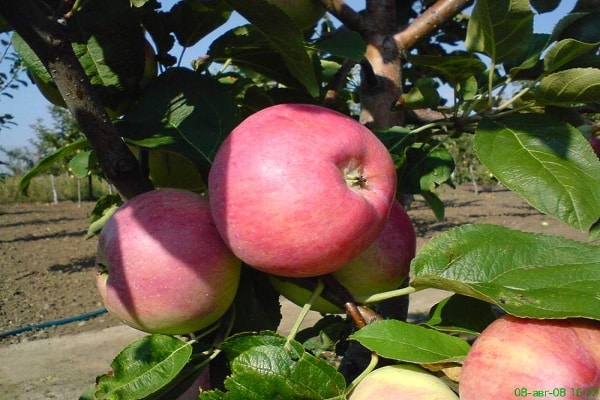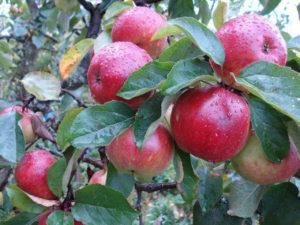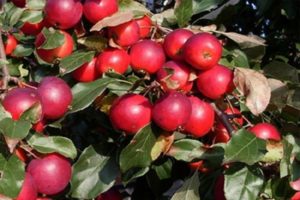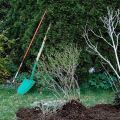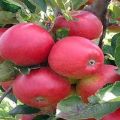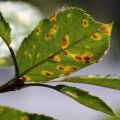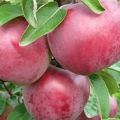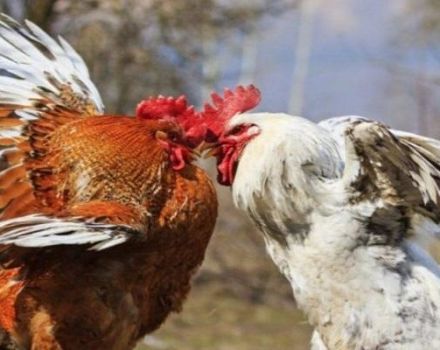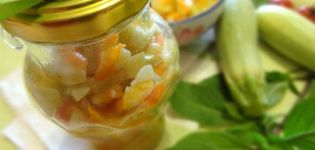Description of the apple variety Korey and characteristics, yield and breeding history
The Korey apple tree has all the necessary qualities for an amateur gardener in the country or in the garden to obtain a tasty and bountiful harvest. To grow apple trees, you need to have knowledge of the correct planting of seedlings and the care of these fruit trees. When choosing a particular variety, it is necessary to be guided by the taste characteristics and the characteristics of the growth of this culture.
History of creation
The Korean variety owes its birth to Japanese breeding, which, by hybridization apple trees Golden Delicious and Indus, not only bred this species, but also awarded the fruits of these trees with excellent taste and large sizes.

Description of the variety
According to numerous descriptions, this type of apple is the best late winter variety with an early fruiting period - five years after planting. The advantages of these apple trees include:
- high productivity;
- drought tolerance;
- early terms of entry into fruiting;
- excellent keeping quality of apples.
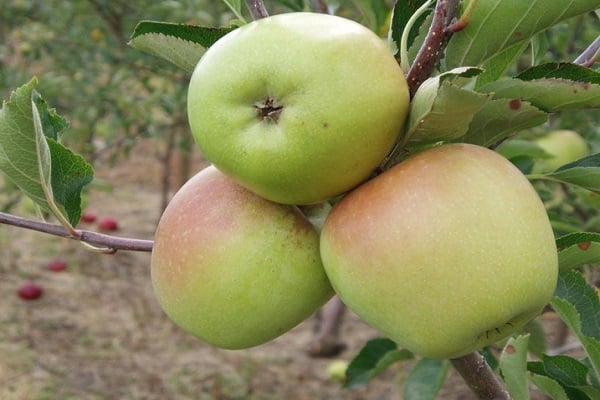
Disadvantages:
- insufficient immunity to scab;
- with a large harvest, crushing of fruits is possible.
The trees begin to bloom in the southern latitudes in April.
Important! The Korey variety is self-fertile, and therefore needs pollinators - Golden Delicious, Kuban. Idared. It is more expedient to plant the mentioned varieties near the described trees.
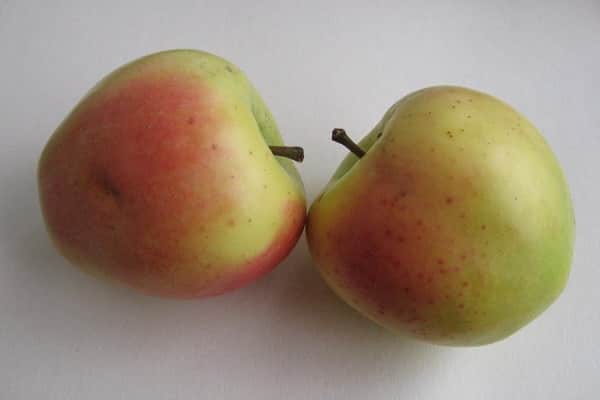
Korey apple trees bear fruit every year, and the harvest is carried out from September to October.
Features of the variety
The apple variety is notable for its small size, in height - about 6-5 meters. The broadly spreading tops of the trees form a kind of weeping crown with age. Elongated, with a grayish bark, the branches have an arched shape, which grow further from the trunk at an acute angle, and the upper rows of branches - at an angle of 90 degrees.
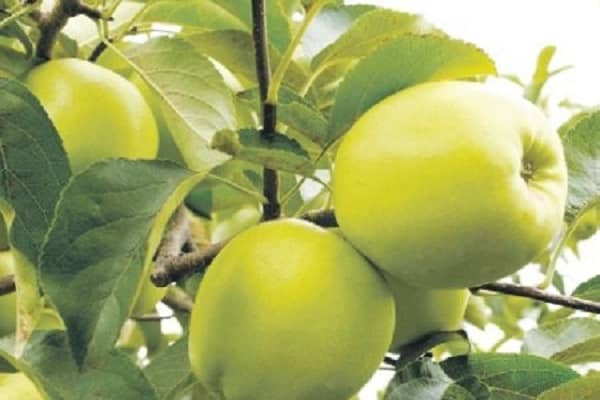
The apple variety with strong, straight, geniculate and slightly pubescent shoots has a mixed type of fruiting, with group formation of fruits - 2-3 apples on two-year-olds and on last year's increments.
The trees are literally covered with small oval leaves with slightly curled tips. The fruits of the apple tree are elongated, oblong-conical, weighing from 100 to 200 grams. The peel of the fruit is yellow-green in color, and when exposed to sunlight, it acquires a crimson blush. The juicy-sugar green pulp of apples, when ripe, takes on the taste of melon.
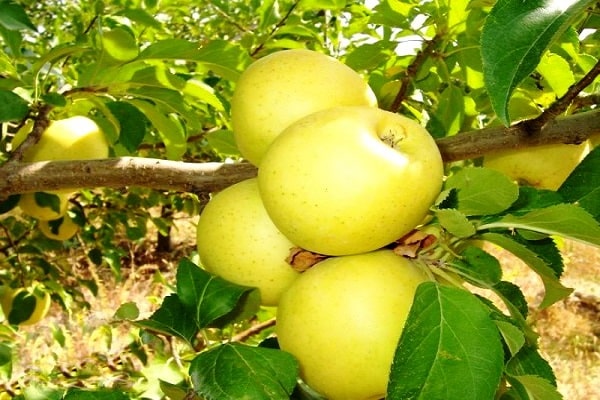
Natural Growth Region
The typical territory of the cultivar is the North Caucasian region. Thanks to zoning, the Kore apple tree can grow in southern regions, such as:
- Rostov region;
- Krasnodar region;
- Dagestan.
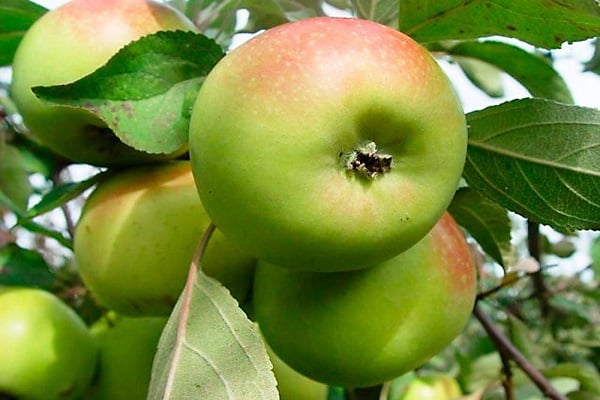
Yield
Thanks to the annual fruiting, the richest harvests are taken from the Kora apple trees. From an area of one hectare, you can collect fruits up to sixty tons. The collection of fruits is carried out at the end of September. Due to the keeping quality of this type, fruits can be stored until summer.
High-quality fruits of the described apple variety are marked by excellent transportability.
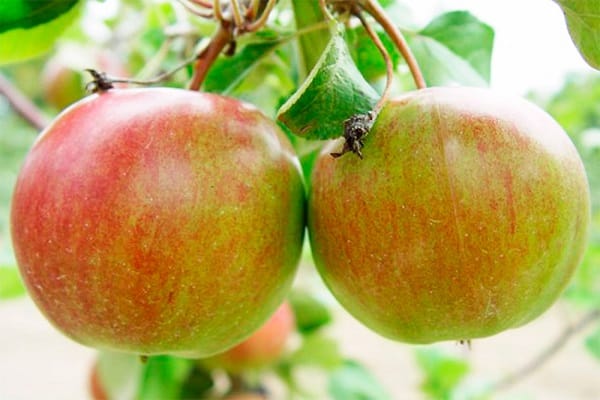
Diseases and pests
Apple trees of Korah have good immunity to the disease in the form of brown spot. However, fruit trees of this variety are completely defenseless against such diseases: scab and powdery mildew.
It even happens that no amount of prevention can prevent the scab from infesting the apple tree. Then the treatment of the affected tree is carried out using chemicals aimed at destroying the scab pathogen itself - the Vinturia mushroom is unequal. Similar chemical components - fungicides - are indicated for the treatment of such fungal infestations.
But before using such drugs, in order to avoid mistakes, you should familiarize yourself with the proposed treatment regimens.
In addition, it is not recommended to use the same drugs to destroy the described fungus, due to the appearance of some resistance to chemical agents due to addiction.

On household plots, the use of industrial products is prohibited, due to the accumulation of poisons in the fruits that are dangerous to human life.
Processing must be carried out with a special device - a sprayer, for its uniform spraying, without harming trees. Apple trees Korah should be processed in calm, windless weather, preferably immediately after the rain has passed.
Important! Before spraying, parts of trees susceptible to infection must be destroyed by burning them.
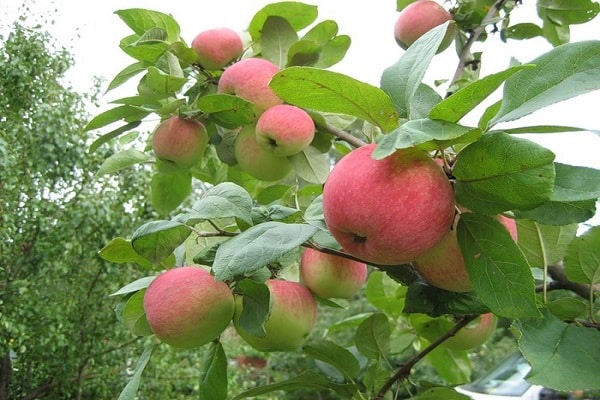
You can also use targeted chemicals to get rid of powdery mildew from apple trees.
These chemicals include:
- Copper sulfate.
- Soda ash mixed with laundry soap.
- Means like Sulfaride and Bayleton.
During the spraying process, gardeners are advised to use special equipment for personal protection.
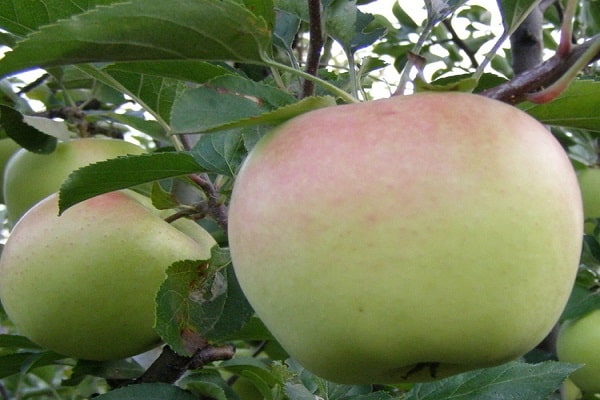
For amateur gardeners, for whom the use of chemicals is unacceptable, methods from alternative methods of treatment are recommended in the fight against powdery mildew.
Manure is a component of this therapy. For processing, a mixture prepared from 1/3 of a bucket of manure filled with water is prepared. A similar solution is infused for about three days, with periodic stirring. Then the mixture is filtered and supplemented with water (1/10).
Important! Spraying should be carried out at sunset, in order to avoid burns to the apple tree.

In addition to diseases, rodents are dangerous for apple trees - mice, bunnies, which love to feast on the bark of these trees. You can scare off such pests with the help of spruce branches - they simply need to overlay the apple trees growing on the site.
The above-mentioned methods of preventing the treatment of apple trees, as well as saving them from rodents, are effective and simply necessary for the safety of the harvest and the life of fruit trees.
